
3-6 February 2025


3-6 February 2025
Tick tock – we’ve entered the second half of the year and that means the countdown to #MI25 has begun!
First thing on the agenda is reviewing all of the stakeholder research and conversations we’ve had over the last few months and using this information as the building blocks to develop our agendas – ensuring that they speak to our ‘Future-proofing African mines, today!’ 2025 theme.
What does the theme mean to me and why did I choose it? Two primary points come to mind: 1) Never before has the future of our planet been so critically determined by the actions we take today and 2) If we want to future-proof our plant, then it starts with future-proofing our mining industry (which is the backbone upon which almost every other industry operates).
Further to this, while the theme undeniably resonates with every one of us on a business level, it likely resonates with you on a personal level as well – and nothing is more motivating (let’s be honest) than a goal that has meaning to you as an individual.
Because the mining industry is a traditionally slow adopter of any change, my primary
goal is to fast track the progress our industry needs to make by determining what needs to be done to build a more sustainable industry, outlining the solutions to achieving this and most importantly, committing to timeframes that make us, this industry, accountable for delivering. The reality is, we don’t have 50 years to determine our future, we have moments.
This will require an ongoing commitment to disruptive thinking, something we started, and successfully achieved in 2024. But as I have always stated, delivering on this new approach to conversations was just the beginning of a new era for Mining Indaba, and the African mining industry. Let’s maintain the momentum we started in 2024 by changing our industry for the better, and in turn, changing our world for the better as well.

Laura Nicholson Head of Content & Strategic Partnerships
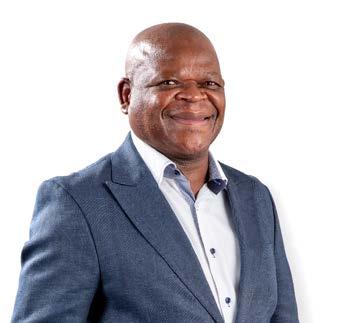
Frans Baleni Chairman, Advisory Board
The mining industry on the African continent is a dynamic and resilient sector that has evolved significantly to become a key driver of economic growth. With a focus on key growth drivers and contributions to sustainable development, the industry is embracing technology and digital transformation to be futureproof, attract investors, and propel further growth. As stakeholders navigate the complexities of the global economic environment, the African mining industry offers promising opportunities for investment and collaboration.
The MI25 theme, “Futureproofing African Mining, Today!”, offers an opportunity for forwardthinking in the African mining
sector. As the global demand for minerals rises, the African mining industry is poised for significant growth and development in the coming years. To achieve long-term success, mining companies need to directly tackle environmental and social challenges. By embracing innovation, responsible practices, and community engagement, African mining companies have the potential to not only thrive in the future but also make a positive impact on society as a whole.
Future-proofing the mining industry in today’s rapidly changing business landscape involves incorporating flexibility through optionality and ensuring robust governance practices. By strategically integrating flexibility and adaptability into their operations, the mining industry can better navigate uncertainties and
capitalise on emerging opportunities. Robust governance structures are essential to ensuring transparency, accountability, and sustainable decisionmaking, fostering trust with stakeholders, and ensuring regulatory compliance.
The question is, who will rise to the challenge?
As Africa’s mining sector grows in prominence, the spotlight is on those who will drive responsible and sustainable development in the industry. Mining Indaba serves as a platform for key stakeholders to come together and address the challenges and opportunities facing the continent’s mining sector. Through collaboration and partnership, Africa has the potential to leverage its mineral resources for the betterment of communities and the environment.
David Sturmes, Impact Facility

As the world transitions to a minerals-based, green economy, all eyes are on Africa in hopes of accessing the continent’s unparalleled mineral riches. However, civil society leaders and community representatives are posing the most important question: What’s in it for the local communities where these resources originate? How can we break the extractivist relationships that have historically failed to generate lasting value at the point of origin?
Mining Indaba plays a unique role in providing a forum for different stakeholders in the African mining sector to converge and deliberate on the latest developments, breakthroughs, and challenges faced by the industry. I can’t wait to participate in the 2025 event and explore its thought-provoking theme of “Futureproofing African Mining, Today.” For me, this theme encapsulates not only the need for investing in technical innovation but also the collaborative efforts required from all stakeholders to ensure that the continent’s mining sector becomes a beacon of sustainable development.
To unlock the full potential of the continent’s mineral resources as a driver of local development and as an engine for the global economic transition, strategic collaboration among national governments, the mining industry, and local communities is crucial. Ensuring equitable value creation must be a shared responsibility across all of these actors to ensure that mining activities propel Africa’s socio-economic advancement while safeguarding environmental integrity and community well-being. This can be done by:
Tech-enabled innovation: African countries should prioritise leveraging emerging technologies and artificial intelligence for the efficient identification of mineral deposits, optimizing exploration efforts and minimizing environmental impact. Continuous improvement in operational efficiency is paramount for mining companies to remain competitive in a dynamic global market. By boosting productivity and implementing sustainable practices, these companies not only enhance profitability but also contribute to the long-term viability of the sector.
Attracting top talent: Academia plays a pivotal role in shaping tomorrow’s workforce and attracting future leaders of the mining industry. Investments in training programmes tailored to the evolving skill sets demanded by a technology-enabled and sustainability-focused sector are crucial. As millennials and Gen Z are increasingly looking for career opportunities that align with their moral compass, the mining sector stands in fierce competition for top talent with a range of other sectors such as tech, health care, media and entertainment. To survive, mining companies should double down on their commitments to ensuring lasting societal benefit, beyond generating profits for its shareholders.
Creating an enabling regulatory environment: Simultaneously, national governments must streamline bureaucratic processes and expedite permitting procedures, from exploration to mining operations. By creating an investor-friendly environment while ensuring robust regulatory enforcement, governments can attract vital investment into the sector while safeguarding the interests of local communities. Seeking international investment, African governments should stand united, stipulating stringent ESG expectations safeguarding the interests of their people, starting a race to the top, improving ESG practices and excelling at corporate citizenship.
Geo-exploration at scale: Many African countries have yet to explore most of their geological potential. Geoexploration at scale is needed to identify the next big mineral reserves and ensure that mining activities can continue upon the completion of current deposits.
Embracing sustainability: To futureproof the African mining sector, mining companies must embrace adaptability. This entails navigating through evolving regulatory landscapes and meeting the increasingly stringent sustainability expectations of global buyers.
Unleashing the potential of the artisanal mining sector: An issue dear to my heart is driving the professioanlisation of the artisanal mining sector, as we try to do in the Congolese cobalt sector through our work with the Fair Cobalt Alliance that was founded and is managed by The Impact Facility, and through our impact-investment, equipment financing programme with focus on the artisanal gold mining sector across Kenya and Tanzania. Talking about futureproofing the mining sector, we cannot leave out the ASM sector that employs more than 50 million people across the globe, dwarfing the workforce of the industrial mining sector by comparison. The artisanal miner sector is forecasted to grow, as the global demand for minerals is increasing and farming and other traditional livelihoods become increasingly difficult due to climate change.
Beyond mere extraction, Africa’s diverse mineral wealth should be strategically leveraged to attract investment into value addition on the continent – from processing to refining to manufacturing where possible – amplyfing the sector’s potential for generating tangible benefits for local communities This also entails channelling government revenues towards critical infrastructure projects, healthcare, education, and job creation through value addition within mining regions.
A future-proof mining sector holds the promise of providing dignified employment opportunities to a diverse workforce across industrial and artisanal mine sites. By generating substantial government revenue and driving meaningful local development, mining activities become a driving force for positive change, uplifting communities and paving the way for lasting prosperity.
By definition, mining activities can never be sustainable, but I truly believe that mining can be a catalyst for sustainable development. As heads
Talking about the professionalisation of the sector, means to me strategic sector development, pivoting from informal artisanal mining activity developing into thriving small-scale mining enterprises, offering safe and dignified working conditions to men and women that are able to generate a living income from their hard work.
For this to occur will require legislative reform that allows for legitimate, yet informal, artisanal miners to formalise their operations, coupled with technical capacity building and business literacy development of cooperatives and other artisanal mineral producers, the provision of fair and regulated market access and importantly, investment into capital and equipment, commensurate with the might of a sector producing billions of dollors worth of minerals, ranging from gold and cobalt, to tin, tungsten and tantulum, sandstone, diamonds and gemstones, to name but a few.
of state, mining elites, and industry experts flock to Cape Town for the 2025 Investing in African Mining Indaba Conference, I’d like to hear the clarion call for collective action resounding louder than ever – moving beyond empty slogans and grand promises to concrete action – accountable not only to government and shareholders but also the sector’s growing workforce and local communities. By harnessing the transformative potential of the mining sector, Africa stands poised to embark on a journey towards inclusive growth, where the wealth beneath the soil becomes a catalyst for prosperity above ground.


A framework agreement has been signed to develop an alumina refinery in the republic of Guinea. The collaboration partnership to deliver this includes the Aluminium Corporation of China (Chinalco) and Emirates Global Aluminium, the United Arab Emirate’s largest industrial company, and also parent company of Guinea Alumina Corporation, which operates a bauxite mine and associated export facilities in the Boké province of Guinea.
Following the announcement in June, the companies will proceed collaboratively with advancing the project’s feasibility.
Earlier this year Barrick Gold Corporation opened its world class training academy at the old Buzwagi mine in Tanzania, in line with the company’s mine closure objective of “leaving a positive legacy after mining has finished”.
The Barrick Academy is designed to offer tailormade training programmes aimed at developing its frontline managers to grow both as individuals and as leaders in their fields, while equipping them with the skills to manage their teams more effectively and to improve performance.
The Barrick Academy will train more than 2000 foremen, supervisors and superintendents from the Africa and Middle East region in the next 24 months.
The opening of the Barrick Academy follows the construction of an airport terminal at Buzwagi’s Kahama airstrip in January this year, which has paved the way for a scheduled airline service that can serve more than 200 passengers at a time. It is expected to be a major catalyst for economic growth in the region.
The airport terminal and Academy form part of Barrick’s plan to turn Buzwagi into a Special Economic Zone (SEZ). A feasibility study commissioned in 2021 showed that the creation of the SEZ had the potential to replace the mine as the region’s economic driver and could sustainably create 3000 jobs annually, generate more than $150000 each year from service levies for the local municipality and deliver approximately $4.5 million in employment taxes a year. The Government of Tanzania approved the conversion of the mine into a SEZ through a Government Notice that was issued in February this year. A number of investors have started the process of setting up manufacturing industries inside this area.

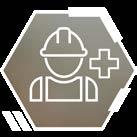
Schneider Electric, a specialist in the digital transformation of energy management and automation, has topped the “World’s Most Sustainable Companies for 2024” list by Time magazine and Statista. This recognition reflects Schneider Electric’s ambitious goals to reduce its own emissions, but also the company’s commitment to helping its customers to become more energy efficient and reduce their emissions.
Time and Statista used a transparent, multi-stage methodology to identify the world’s most sustainable companies for 2024. The process began with a pool of over 5,000 of the world’s largest and most influential companies. Following a rigorous four-stage assessment, the final ranking excluded unsustainable industries and considered factors like external sustainability ratings and commitments, corporate reporting practices, and environmental and social performance indicators. This comprehensive approach produced a ranking of 500 companies from over 30 countries.
Both Time and Statista highlighted Schneider Electric’s technological expertise and the Schneider Sustainability Impact (SSI) programme. This programme drives and measures the company’s progress toward global sustainability 2021–2025 targets contributing to six longterm commitments that cover all environmental, social, and governance (ESG) dimensions. Among this progress, the company helped customers reduce their carbon emissions, with 553 million tonnes of CO2 saved and avoided since 2018. The company has also made significant progress in transforming its own supply chain. Carbon emissions from Schneider Electric’s top 1 000 suppliers fell by 27% since the beginning of the programme — and 21% of the company’s most strategic supply chain partners have met Schneider Electric’s decent work standards.

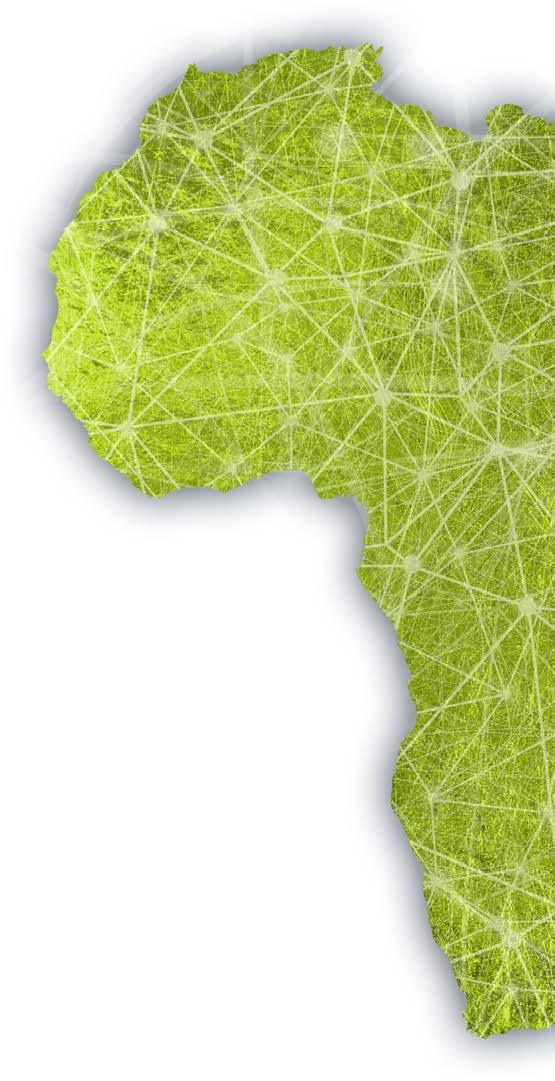

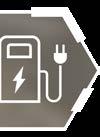
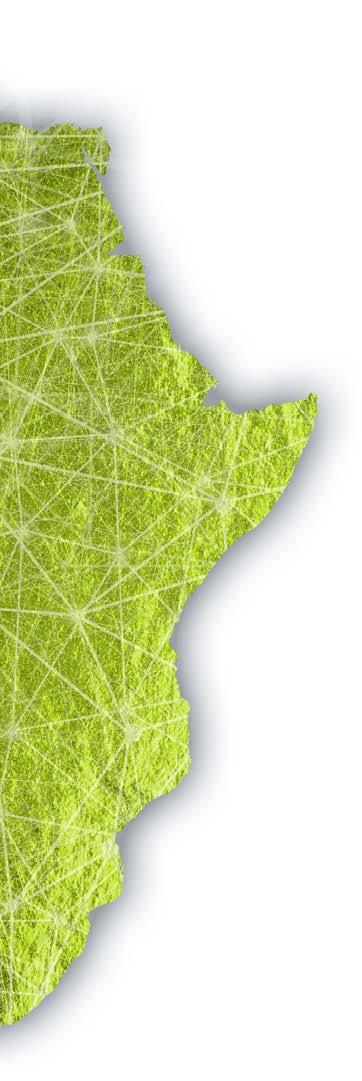


According to a Bloomberg, KoBold Metals could spend $2.3 billion to build a major new copper mine in Zambia.
The firm aims to produce more than 300 000 metric tons per year at Mingomba — making it the country’s biggest such operation. At present, the plan is to start sinking the mining shaft in the first half of 2026.
Not only will this new project represent Africa, and Zambia’s true copper potential and contribution towards delivering critical minerals, it is a reflection of a globally owned company still contributing towards economic upliftment for the country, in the country. Kobold to date has over 250 Zambian employees and contractors, over 90% of its staff in Zambia are Zambian nationals and over 70% of its management and executive team is Zambian.
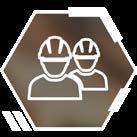
The University of Fort Hare in South Africa’s Eastern Cape, and AngloGold Ashanti have established the AngloGold Ashanti Chair in Dairy Science and Technology, a project designed to sustainably improve yields for small-scale farmers in one of South Africa’s poorest provinces.
The Chair will drive research activities that contribute to new knowledge production in dairy science, both nationally and regionally. This research is designed to support rural small-scale farmers in the Eastern Cape and elsewhere in the country over an initial 10-year period. University of Fort Hare Vice-Chancellor, Professor Sakhela Buhlungu says, “This is the first endowed research chair for our university, ushering in a new dawn for knowledge production to support industry growth, food security, shared prosperity, inclusivity, socioeconomic development and upliftment of stakeholders in the dairy sector value chain and rural communities.
This grant from AngloGold Ashanti does two important things: it sets us on a new strategic trajectory by helping the establishment of a Faculty of Veterinary Science, and it ensures a lasting legacy for rural development in the Eastern Cape.” For AngloGold Ashanti, the R12.5 million endowment is part of a larger investment in legacy projects in education and agriculture that AngloGold Ashanti will carry out over the next five years to honour the company’s commitment to South Africa, its employees and its communities.
The world of underground drilling technology is undergoing a significant transformation. This evolution promises not only enhanced precision and productivity but also a wealth of detailed operational data. Moreover, it offers the potential for safer drilling practices through remote control. One company leading the charge in this revolution is Sandvik Mining and Rock Solutions, offering a wide range of underground drill rigs and bolters. Customers are progressively embracing intelligent drilling, with a growing interest in battery electric models for the future.
Khomotso Duiker, Business Line Manager for Underground Drills at Sandvik Mining and Rock Solutions, reveals that the Sandvik 400 Series and the Sandvik 300 Series now feature intelligent models. These innovations are driven by Sandvik’s iSURE® Intelligent Sandvik Underground Rock Excavation software, enabling automated drilling cycles.
One poignant feature of Sandvik’s intelligent machine models is their ability to download the mine’s drill plan for development ends and execute drilling precisely according to that plan. This optimisation leads to more effective blasting, eliminating issues like underbreak or overbreak. Remote control capabilities are another highlight. The tele-remote function allows drilling operations to be controlled from the surface, provided there is sufficient on-site network infrastructure.
Monitoring equipment performance has become critical for mining operations, and Sandvik’s drill rigs come equipped with the Knowledge Box™, gathering valuable data such as advance speed, penetration rate and cycle times.
The South African mining industry has made significant inroads into addressing tuberculosis (TB) since 2017 by beating its 10-year target to reduce the incidence rate among mineworkers to below national levels, the Minerals Council South Africa says.
In 2014, the Mine Health and Safety Council set the milestone of achieving a TB incidence rate for the sector of below the national average by 2024.
In 2015, the mining industry’s TB incidence rate was more than 1 060 per 100000 employees, according to Minerals Council data, compared to a national average of 834/100 000 people.
By 2022, the latest year for which the Minerals Council has verified data, the incidence rate was 278/100 000, well below the 537/100 000 national rate.
“The mining industry’s biggest achievement in healthcare was reaching the TB incidence rate in 2017 and sustainably keeping it well below the national level every year since then,” says Dr Thuthula Balfour, Head of Health at the Minerals Council.
David McKay, Miningmx
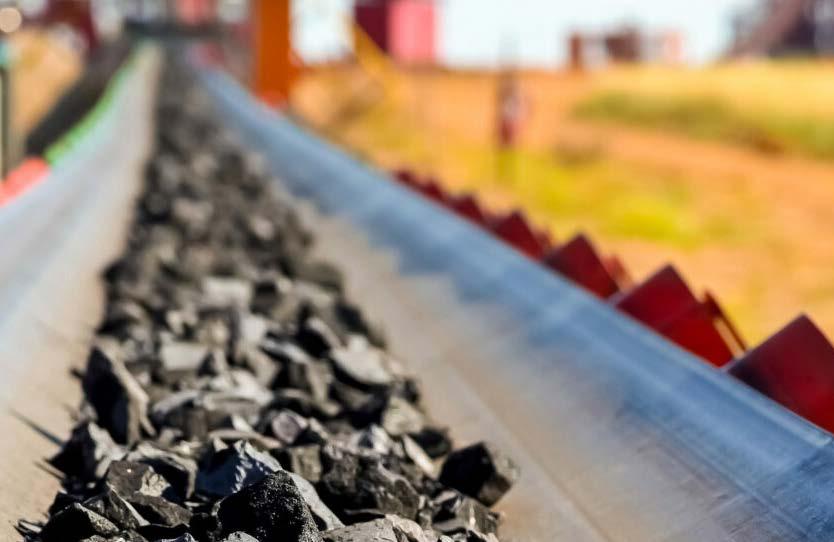
MANGANESE was the mineral for which Anglo American CEO Duncan Wanblad had no plan in terms of his proposed and far-reaching group restructure. “It is a great business but, given the work we have been doing, that is on the to-do list,” Wanblad told a Goldman Sachs analyst on May 14.
Handily, Anglo’s 60% joint venture partner in the manganese assets does have a plan. Asked if South32 would be interested in buying out Anglo’s stake, South32 CEO Graham Kerr told Reuters: “At the right price, absolutely. We know them better than anyone else.”
Situated near Hotazel in the Northern Cape, the manganese mines are part of the world’s largest single resource of the mineral. Of South Africa’s nine operating manganese mines, the two largest have lives of 147 and 143 years at current production.
Though scale is important in mining, it doesn’t necessarily stand for business success. That’s why some manganese miners are trying to get their heads around the next potential step in the mineral’s life cycle, which is to produce a high-purity manganese sulphate, a chemically beneficiated product used in lithium-ion electric vehicle (EV) batteries.
There are a few good reasons manganese producers view the EV market as a future money tree. First, manganese sulphate is expected to command a premium, as there are so few manufacturers. Second, demand is forecast to grow tenfold by 2030, according to Giyani Metals, a Toronto-listed firm hoping to produce the mineral. The US is a major potential market.
China controls about 96% of manganese sulphate supply, a statistic that worries the Biden administration. The Inflation Reduction Act (IRA), recently redrafted by the US, offers tax credits to producers of EV battery minerals provided they are not in China, Iran, Russia or North Korea — dubbed “foreign entities of concern” (FEOC).
One wrinkle in this for South Africa is that the IRA also requires that EV mineral suppliers operate in domains with free trade agreements. Luckily, South Africa has a get-out clause, says Madelein Todd, head of marketing for Manganese Metal Co (MMC), which has the rights to reprocess the tailings of South32/Anglo’s manganese production.
Says Todd: “The percentage of the value of raw materials required to comply increases each year, but only to a maximum of 80%.”
As manganese is — in volume terms — a small constituent of EV battery production, it is part of the 20% of other minerals. Suppliers need only be outside the FEOC to meet IRA regulations.
Currently, unbeneficiated manganese produced in South Africa, including by MMC, supplies the world’s steel sector, which uses it as a hardening agent. But the race is on now to build an EV supply market. There’s a producer in Belgium, and production in Mexico is being planned, but when MMC enters the market, in 2026, it intends to sell a crystallised product that’s user-friendly to buyers.
MMC recently approved R130m in capital to build the crystallising facilities but has yet, somewhat surprisingly, to attract loan support from the Industrial Development Corp. Giyani Metals has had better luck with the bank, provided the beneficiation plant is in South Africa (to be supplied from a mine in Botswana). Giyani CEO Danny Keating says Botswana is better at joining the dots in mining than South Africa.
So far, the big hitters in manganese production, such as African Rainbow Minerals (ARM) and Jupiter Mines, have stayed outside the high-purity manganese equation. Brad Rogers, CEO of Jupiter
Mines, which owns 49% in Tshipi, the secondlargest manganese mine in the Northern Cape, says building an investment case for high-purity manganese involves “making one hypothetical assumption upon another hypothetical assumption”.
The trajectory of EV purchases is one imponderable. US carmakers General Motors and Ford recently cut EV production targets, while Tesla’s acknowledgment in January of “notably lower” sales growth upends forecasts that EV purchases will continue to grow at historical rates. “The reality is that the adoption curve will be slower,” said Tim Piechowski, portfolio manager with ACR Alpine Capital Research. “It will just be a longer ramp-up than perhaps was initially expected,” he told Reuters in April.
Science is another unknown. Formulations of lithiumion batteries using manganese may change as consumers look for more range on their vehicles, quicker charging times and lower expense. Right now, manganese comprises two parts to two and six parts of nickel and cobalt respectively. Work is under way to remove cobalt and reduce nickel content in favour of manganese in an effort to reduce costs and improve concerns about sustainability, says Todd.
“The commercialisation of high manganese formulations will probably take place only late this decade and ramp up beyond 2030,” she says. “This means we will have time to ramp up manganese sulphate monohydrate capacity to meet current demand levels, which are modest outside China but growing.” IRA benefits expire in 2032.
In the meantime, prices for manganese in carbon steel are flying.
South32 announced in April that because of weather damage to its GEMCO facilities in Australia it won’t be back in production until the first quarter of 2025. Global inventories of manganese are expected to last until the third quarter, but a oneyear outage of Gemco’s facilities — equal to about 13% of world demand — will create a huge supply squeeze. ARM stands to benefit. Share earnings could increase to as much as 66% to R21 a share, according to analysts at RMB Morgan Stanley.
Green copper and clean smelting and refining are envisaged at Orion Minerals’ quickly advancing base metals mines in South Africa’s well-endowed Northern Cape province, which has historically produced 2.5-millon tons of copper until base metal mining ceased there several decades ago. The fully permitted and already reviving Prieska mine will begin producing its first saleable copper and zinc 12 to 18 months after finalising its total funding requirement, which is estimated at from R3-billion to R4-billion.
“First focus was to prove the ore. We’ve done that. Second focus was do the bankable studies; we’ve done that. Third is build the mines and produce concentrates that are saleable, and then the fourth one will be putting those concentrates in a local smelter or refinery,” Orion CEO Errol Smart said during a South Africa-Australia webinar covered by Mining Weekly.
Regarding Orion putting up a smelter, Smart said: We would lean away from smelting. We’ve done a lot of work on metal vapour refining. We’re doing a lot of work on hydrometallurgical leaching.
“We would prefer to go away from energyintensive smelting. It’s difficult to build an environmentally friendly smelter, but it is quite viable to build an environmentally friendly metal vapour refinery or leach plant, and that’s what we will probably look at in the future. We’ve got a whole team working on that. We’re looking at the optimised case,” he said during question time.
Renewable energy is on the cards: “We’re in advanced discussions with a few renewable energy power producers and one is offering 90% certified renewable energy at a cost 20% lower cost than the Eskom supply cost. “So, essentially, we will be producing certified green copper on our side. That’s a huge opportunity and when speaking to the offtakers and debt financiers that green, ESG, credibility is very important,” he emphasised. Power utility Eskom is scheduled to turn on the mine’s 15 MW of electricity input next Wednesday.
Trial mining has been under way for some time, with drilling and blasting taking place daily, and about 30 000 t of ore is already on surface.
The existing shaft, which descends to 1 100 m, has multiple underground roadways that reach down to the deepest ore at 1 250 m.
Orion has been conducting bankable studies since 2019 and is putting the finishing touches to updated versions.
Mine chambers at Prieska, which were blasted in the 1970s, have held their ground and no meshing and lacing, nor rock anchors, are required.
“This ground is standing fantastically well and what we’ve proven is that in the area where we’re going to mine, we can put in big machines, we can get economies of scale, and we can get the mining happening,” said Smart.
“We can run 4.5 m by 4.5 m development ends, and we can get efficiency in scale of mining.
“We’ve also proven that we can handle events of nature, a onein-100-year rainfall event.
“We’ve put flood control measures in place, and we’ve shown that there will not be no unplanned flooding.
“The nine-billion cubes of water in the mine must be pumped out and the pumps to do this have been put in place,” said Smart. The construction of a water retention dam will be completed in the next few months and the reverse osmosis plant is scheduled to be in place next year as an additional water control measure.
A 15 MVA grid power supply system has been constructed and 4 km dual water and tailings pipeline has been established to the tailings facility.
Besides Prieska, the Johannesburg Stock Exchange- and Australia Stock Exchange-listed Orion is also advancing the Okiep copper project, which has produced nearly two-million tons of copper historically under previous Newmont and AngloVaal ownership. These projects are gaining strong momentum at an ideal time in a district that has produced at an average grade of 1.9% copper. For many decades, it produced more than 20000 t/y of copper from the existing plant facilities.
At Okiep, which is known for its high grades, Orion drilled one of the highestgrade intersections that has been drilled in the world, 50 m at 5% copper.
“There’s high-grade ore here that hasn’t been mined, and we’ll be proving it as we go,” he said.
Okiep is awaiting a water right and sign off on the engineering design of the tailings facility.
“Over the last nine years, Orion has done a consolidation of the most prospective brownfields projects and many of the best greenfields areas. We’ve put that together over here, and those are the projects moving forward.”
The company has spent this year finalising optimised feasibility studies, while 160 people are active on site at Prieska, where having plants in place and production commencing at the end of next year is envisaged.
“There are very few opportunities in the world where there are mines that are fully permitted, they can come into production in 12 to 18 months, and they’ve got a big growth profile in front of them, and that’s where we are.
“This Prieska mine is a brownfields project. It was a large mine in its time. It used to have a processing plant with a capacity of three-million tons a year. It processed very successfully, produced very good concentrate. There are a lot of knowns and a lot of the infrastructure was in place, and that’s what’s helping us to accelerate this project,” Smart outlined. The historic mining happened in ore that was dipping towards the north-east. At about 950 m depth, the orebody suddenly goes to a reversal and it dips to the southwest, and it becomes very flat dipping.
That’s historically where AngloVaal stopped mining. AngloVaal mined from 105 m below surface to 970 m below surface. There were 42 known mines in the district, more than three-quarters of them on Orion properties.
There are 1700 outcropping mafic orebodies that could have ore, and about 200 of those have got copper showings.
Access to technology has changed the landscape of underground mining over the past five years, according to Jamie Van Schoor, CEO of Dwyka Mining Services. Gerard Peter reports.
Jamie van Schoor starts by explaining that the implementation of technology is relative to the times. “When people were mining 50 years ago, the technology was representative of what they wanted to achieve. Over the past five years, everyone has been innovating, particularly in the digitalisation and automation space and this has made technology readily available to mining companies.”
He adds that three important factors have driven the tech revolution in underground mining. “Firstly, remote sensor development has scaled up beyond what we thought could be achieved. Secondly, the miniaturisation of IoT devices has meant we can get accurate data from complex environments. “Thirdly, over the past five years, connectivity from the surface is helping to drive digitalisation and automation underground. In 2019, Dwyka Mining Services pulled out all the stops to ensure this connectivity and we were dealing with a low data stream. Now, with technology, we can for example, monitor how automated LHDs are operating and we can download this important data in real-time.”
Over the years, Dwyka has established partnerships with some of the world’s leading tech suppliers so that it can offer bespoke underground solutions to its clients.
One such solution is a ventilation on demand (VOD) solution for a diamond mine in Limpopo, South Africa. Van Schoor elaborates, “We have worked with three key partners on this project: Clemcorp which will provide ventilation equipment; Ventsim Control to deliver air to the working face of the operation; and Maestro Digital Mine which focuses on remote sensing environmental management.
“These partners have created a virtual triangle to unlock VOD and ensure that we get the correct amount of air to the right place at the right time and at the right price. All of this is highly visual and reliable because of the ecosystem we developed.” Another technology that is making a big impact on underground mining is the use of drones. To this end, Dwyka works with Emesent which provides drones to map out complex environments to ensure efficiency and safety. “In addition, companies are using this technology and our teams to conduct project-based work and bespoke geotechnical analysis,” Van Schoor adds.
A major recent innovation from Dwyka is partnering with LASE Industrielle to ensure pit-toport monitoring. This allows a mining company to monitor the entire value chain, from underground operations all the way to loading concentrate on the ship. This includes monitoring materials handling and the logistics required to get the product to its final destination.
Van Schoor is a firm believer that the workforce needs to be upskilled for technology to function optimally. One initiative it is currently working on is partnering with Getac to get employees to move away from pen and paper and use tablets for data collection.
“One of the biggest challenges in our industry is that we collect data that can’t be digitised for us to review. By using tablets, we now have access to important data in a quick turnaround time,” Van Schoor states. In recent years, Dwyka has been using Boston Dynamic’s Spot, a robotic dog, in underground operations with great success. Mimicking the movements of a real dog, Spot is used to (among others) ensure that areas that humans can’t reach underground are safe for blasting operations. However, Van Schoor explains that it is important for companies to understand the value that technology offers.
“For example, we are working with companies to put Spot and other robotic equipment on company payrolls. We are also helping to ensure that employees are teamed with the correct virtual or digital colleague to carry out their work.”
Currently, the company is also developing Dwyka , a tech oasis to teach learners in situ skills needed in underground operations. “The aim is to help mines recruit applicants from local communities and then train them at Dwyka.
Once they have successfully completed a 12-month learnership they can be absorbed into a mining operation. Even if they are not, they will still be equipped with the skills needed to find employment in other mining operations,” Van Schoor explains.
Van Schoor emphasises the importance of understanding integrating tech capital with human capital. He points out that companies need to look at two factors when implementing technology — assurance and insurance. Assurance refers to ensuring that technology is going to meet the requirements and deliver on the expectations. Meanwhile, insurance ensures that the solution does fulfil the objective you set out to achieve.
“We have been working hard with the market to understand the user requirements, then understand the team components to develop the right solution. Often, those levers need to be adjusted before you can see any value from the technology. It might be the right solution for the problem but you still need people to deploy it.
“Also, we need to consider that as technology evolves, the workforce needs to evolve as well. Blending these two key aspects will ensure our ability to adopt tech for real change in underground operations,” Van Schoor concludes.
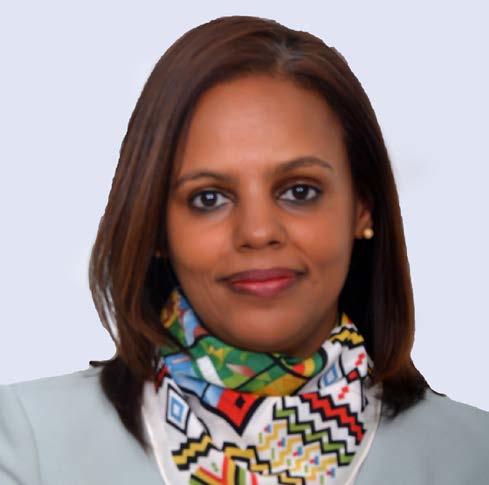
Future-proofing African mining entails a multifaceted approach aimed at ensuring that the mining sector in Africa is sustainable, resilient, and capable of thriving in a rapidly changing global landscape.
Dr. Marit Kitaw, Interim Director of the African Union-African Minerals Development Center (AMDC)
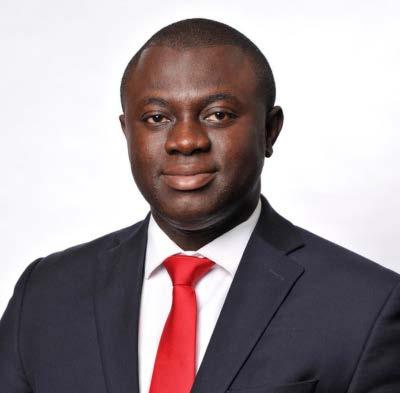
To secure the future of African mining, it is imperative that we adopt a forward-thinking approach. This includes sustainable planning of the future mining operations, cultivating the right workforce and proactively engaging with communities that will be impacted by mining activities.
Kwasi Ampofo, Head of Metals and Mining, BloombergNEF





Future-proofing African mining requires responsible practices, environmental sustainability, social justice, and inclusivity. Addressing climate change, geopolitical competition, and demographic changes will lead to a brighter future for the global mining industry.
Rohitesh Dawan, President and CEO, ICMM
Inclusivity, transparency, and equity are crucial for a sustainable future in Africa’s mining sector. This includes environmental sustainability, technological enhancements, and increased exploration for new tenements.
Jito Kayumba Special Assistant to the President, Republic of Zambia
Risk management is crucial for the unpredictable future, requiring flexible systems and procedures. Our actions have immediate and long-term effects, and our actions impact future outcomes. Developing sustainable behaviors can make future building easier, less expensive, and more equitable.
Estelle Levin-Nally, Founder and CEO – Levin Sources
As Africa Free Trade Agreement talks reach the peak of their development, several countries are choosing mining as their area of expertise, demonstrating their capabilities in terms of regulations and cutting-edge technology. This is significant because extracting rare minerals would necessitate precision, allowing for reduced operational costs while also taking into account other ESG factors.
Bokang Kelepa, MD, Baletsema Mining Services
Future proofing African mining today means taking strategic and sustainable actions to ensure long-term success and resilience in the ever-evolving global market, aligning with my vision for a thriving and responsible mining industry in Africa.
Nkandu Beltz, MD, Beltz Mining

The ecological crisis is intensifying in the Democratic Republic of Congo (DRC), with accelerating deforestation and alarming levels of atmospheric pollution. Rawbank, a pillar of the country’s banking sector, has positioned itself as a pioneer of sustainable finance.
Between 2002 and 2023, the country lost 6.86 million hectares of primary humid forest, or 36% of total tree cover loss. This endangers the Congo Basin ecosystem, which accounts for close to 70% of Africa’s forest cover. Furthermore, the concentration of particulate matter (PM) in Kinshasa is currently 5.9 times above the annual guide value given by the World Health Organization for air quality, highlighting the environmental challenges which confront the Congolese capital.
At this critical point, Rawbank, as leader of the Congolese banking sector, is a force for environmental sustainability. The bank actively supports projects to reduce carbon emissions and protect the ecosystem. The bank’s climate finance desk, launched in 2023, facilitates the financing of major projects which respond to climate challenges, while stimulating the national economy.
The bank understands the leading role of technology in this transition and has integrated innovative solutions into its model to reduce its carbon footprint, while extending financial inclusion. The bank’s Illicocash fintech illustrates this novel approach. With more than 420,000 users in 2023, Illicocash facilitates completely dematerialized transactions, removing the need for physical documents and personal movement, and so significantly cutting the bank’s carbon footprint. This initiative allows Rawbank to combine its efforts to protect the environment with the promotion of financial inclusion by offering modern financial services which respect the ecosystem.
We consider our commitment to climate finance as an essential responsibility to future generations. That’s why we are investing in projects which contribute to protecting the planet while stimulating economic growth in our country
By investing in renewable energy, we are investing in the future of the DRC. We firmly believe that the transition to clean energy sources is indispensable for sustainable and inclusive development.
Mustafa Rawji, Directeur Général, Rawbank
At the same time, Rawbank is strengthening the financing of projects which aim to support the development of renewable energy. In partnership with Swiss energy giant Vitol, the bank has announced an investment of $20 million in projects aiming to develop renewable energy and protect forest ecosystems. These combined efforts aim to reduce carbon missions while supplying clean, affordable energy to the Congolese population.
Rawbank has emerged as a key actor for change in the DRC. By embracing responsible practices and promoting sustainable solutions, the bank is proactively working to build a better future for the Democratic Republic of Congo and its citizens.


Kinross Gold takes pride in being a stable mining company, focused on consistently delivering our market commitments, generating strong cash flow, minimizing our environmental footprint, and creating a positive and sustainable legacy in our host communities through responsible mining while also generating value for our shareholders.

Be seen by an audience of more than 9,900+ prominent mining authorities and decision-makers.
Increase your company’s visibility and reach your desired target audience.
Raise consumer awareness of a product or promote or introduce a new product.
Establish a direct connection between your brand and Mining Indaba, a prominent and reputable brand. Expand and strengthen your brand’s discoverability throughout the entire mining value chain.
Distribution
• October 2024
• January 2025
• Digital distribution to event delegates and targeted data globally
Our reach and engagement
28K + Monthly website users (On average)
29K Linkedin followers
50K + Mailable contacts

• Monday, Tuesday, Wednesday and Thursday
Advert availability
• 4x A4 full-page adverts per issue
• 4x half-page adverts per issue
Distribution
• October 2024
• January 2025
• Digital distribution to event delegates and targeted data globally
Our reach and engagement
28K + Monthly website users (On average)
29K Linkedin followers
50K + Mailable contacts

• Monday, Tuesday, Wednesday and Thursday
Advert availability
• 4x A4 full-page adverts per issue
• 4x half-page adverts per issue
delves into the significance of the MI25 theme, “Future-proofing African Mining, Today!”
Kathryn Barnard Product Director
Eve Harper Portfolio Director
The theme Futureproofing African Mining, Today! emphasises the need for proactive measures to address the changing demands and challenges facing the sector while also promoting the well-being and prosperity of African countries and communities. By focusing on creating a sustainable and regenerative mining sector, the goal is to achieve a Just Energy Transition that benefits all stakeholders and contributes to the continent’s overall development.

Future-proofing African Mining, Today! is a theme that speaks to all stakeholders from across the mining ecosystem. It offers each of us the opportunity to decide the role we will play in forging the future of Africa’s mining industry. At Mining Indaba 2025 it invites delegates walking through the doors of the CTICC to be part of a community of change-makers, forward thinking leaders who are prepared to think differently, embrace innovation, and foster a culture of collaboration and continuous learning so that we can define our future together, today.

Fred Noce VP of Commercial & Business Development
Future-proofing African Mining, Today! presents a unique opportunity for our sponsors and exhibitors to align with cuttingedge strategies and demonstrate their commitment to a sustainable future, enhancing their market position and competitive edge.

Zeinab El-Sayed Head of Government Partnerships
Cross-border cooperation is essential for governments to address the challenges facing their countries in an increasingly interconnected world. In order to future-proof their economies, governments ought to collaborate with each other and engage with the private sector to implement effective and sustainable policies. The success of these partnerships will be crucial in ensuring that the continent remains competitive and resilient in the face of evolving global challenges.
Natasha Johnson-Pitt Senior Marketing Manager
Future-proofing African Mining, Today! means embracing innovation and sustainability to ensure the long-term prosperity and resilience of the mining industry. This theme inspires global mining branding initiatives that drive meaningful change, positioning our industry for growth and creating opportunities for future generations.


African mining has long been a key industry on the continent, driving economic growth and development. As we look to the future, advancements in technology and sustainability practices are reshaping the way mining is done in Africa, offering new opportunities for growth and innovation. It is a pivotal moment for the African mining industry to take proactive steps towards a more sustainable and responsible future.
The Mining Indaba 2025 theme “Future-Proofing African Mining, Today!” is poised to reshape the mining industries, redefine operational processes, and offer revolutionary opportunities for boosting competitiveness. As global demand for critical minerals rises, African mining must reinvent itself for a more impactful future. Industrialising Africa, prioritising health and safety, and adopting game-changing technologies are essential steps in ensuring the sustainability and success of the mining industry on the continent. By implementing effective net zero and Just Energy Transition strategies, African mining can not only maximise its mineral endowment but also contribute to the development and well-being of local communities for generations to come.
The journey of reinvention is not an individual effort; it necessitates a community: collaboration across industries, sectors, and borders. By working together, sharing knowledge, and driving collective action, putting people at the center of digital transformation, and fostering a culture of continuous learning and adaptability, we can create a brighter future for all.

Chanel Burke Senior Comms Manager
Leading the charge in African mining. The future of mining starts now.
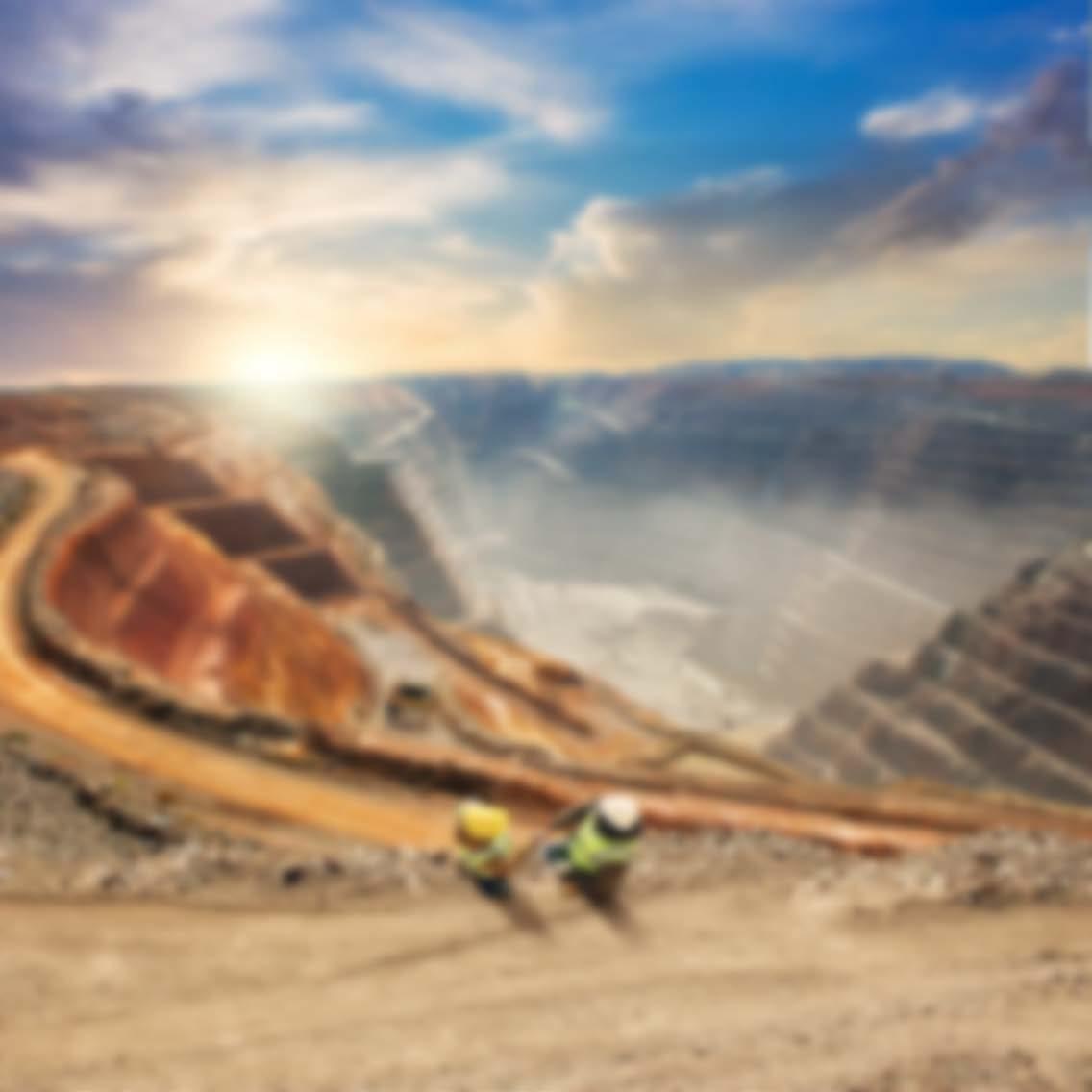
Enquire now for sponsorship packages
ENQUIRE NOW
Interested in attending as a delegate for 2025
REGISTER NOW
Want to get in contact with the team to start building your Mining Indaba experience? Contact the team below:
FRED NOCE
VP of Sales & Business Development fred.noce@miningindaba.com
NATHAN HIRSCH
Key Account Director – South Africa, Namibia & Zimbabwe
nathan.hirsch@miningindaba.com

ALFONSO JUGO
Key Account Director – Africa, Americas & Asia alfonso.jugo@miningindaba.com
NATALLIA ZHUK
Key Account Director – Europe & Australia natallia.zhuk@miningindaba.com